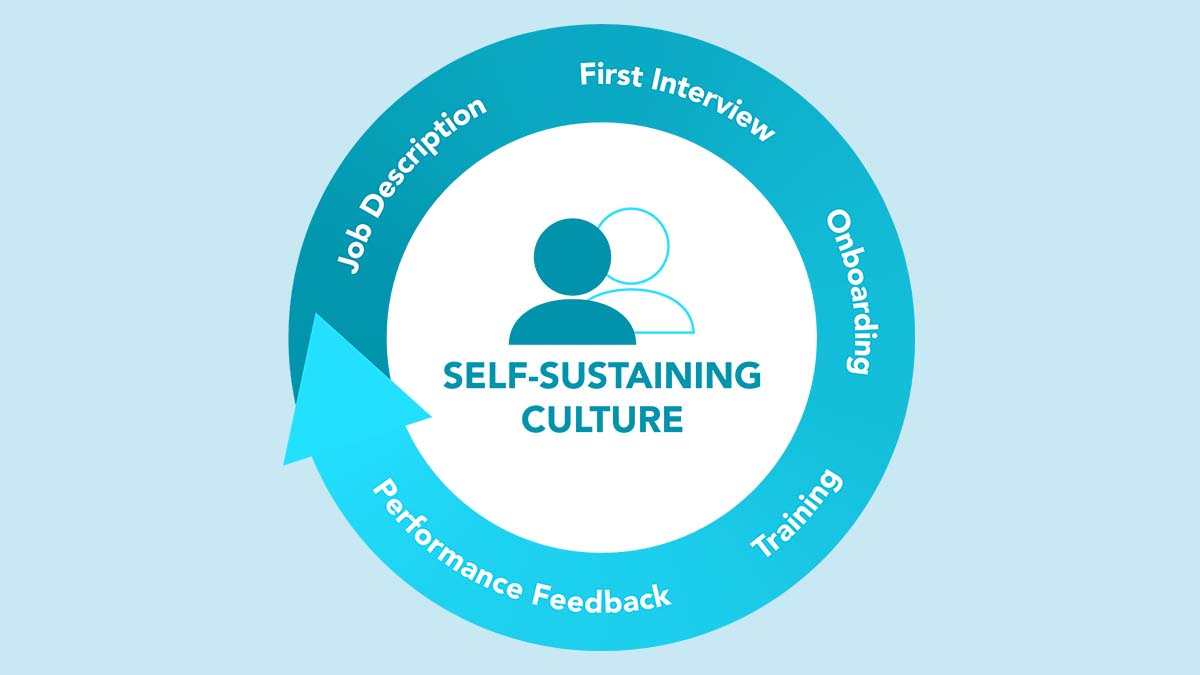In Part 1 of this series, we discussed how to ensure a smooth and effective interview process to attract and seal the deal with the employees you want most. In Part 2, we’re talking about best practices for onboarding, training, and ongoing performance monitoring to ensure that you retain the best talent and drive a culture of growth that is results-driven.
Onboarding – Setting Everyone up for Success
Congratulations! You and your team made it through the interview process and you’ve hired a great new team member. Everyone’s happy and the energy is buzzing. Now take a moment to pause and think. As happy as you may be with your new hire and as confident as you may feel about their ability to perform, do not skip your normal onboarding sprocess and throw them into the fire. Onboarding offers an amazing opportunity to guide your company culture in the right direction. By supporting new hires from the beginning, you’re setting a good example for existing employees and setting your team up for success.
Here are some tips for developing and sticking with a sustainable onboarding process:
Make it mandatory – Onboarding is where new hires get a clear idea of what the company culture is and what is going to be expected of them. Don’t make exemptions for new hires who may have more experience or who you may have a longer professional history with. By requiring that every employee go through a thorough onboarding process, you’re ensuring that everyone is starting with the same baseline understanding, which will help avoid issues in the future and strengthen the culture. Even Facebook takes the time to send its new employees through a month-long onboarding process.
Make it fun – Onboarding doesn’t have to be all paperwork, all the time. Incorporating light-hearted, fun activities into the onboarding process helps keep new hires from feeling isolated and contributes to a positive company culture. Companies should also have a standard process to welcome and introduce each new employee to the rest of the team. Consider making it mandatory for the hiring manager to send out a welcome email with the new employees’ picture and some fun facts about them. In a large company, these welcome emails can be group-specific, but even larger global companies should send out a monthly email with a summary of new team members.
Don’t take shortcuts – Despite leaders’ best efforts, the hiring needs of a company are never consistent. In times of high demand, hiring managers may be tempted to cut onboarding short, or even skip it all together. These are the times when onboarding is most important. When multiple new hires are brought in during a relatively short period, it’s essential to build their confidence and facilitate camaraderie as early as possible.
Ask for feedback – Getting feedback on everything from the hiring process to first impressions, to the onboarding process is crucial to improving your company’s processes and culture. While this serves a functional purpose in showing you what changes might need to be made on a tactical level, it also shows your new employee that feedback is appreciated and that their experience matters.
Training That Makes a Difference
You might think that because you’ve hired the best and the brightest, you won’t have to invest in training. The fact is that the best employees will have the greatest desire for personal and professional growth. No matter how experienced your team is, you should always make personal and professional training available.
While it might not make sense for all training sessions to be made mandatory across all levels, you may find role-specific mandatory training to be helpful. For example, employees at the manager level may benefit from training that highlights higher-level strategy development, while entry-level workers may require more skill-focused training. One type of training that is beneficial across the board is diversity and harassment training and should be made mandatory for all employees. I cannot stress enough how important it is to not only hire a broad and diverse employee base, but also to make sure all employees understand how they are expected to act and respect each other.
Successful Performance Feedback
In Part 1 of this series, I advised leaders to lay out a 90-day success plan and outline how candidates are going to be evaluated BEFORE they even walk through your door. Now that they’re officially a member of your team, be sure to reiterate those goals and KPIs and set clear expectations around performance feedback to ensure that employees know when and how they are going to be receiving and giving structured feedback.
Here are some processes to keep in mind:
Schedule regular meetings – Make sure all levels have weekly or bi-weekly meetings with their direct managers. The purpose of these meetings is less about providing time for the manager to manage, and more about allowing the subordinate to get clarity on ongoing activities and air any grievances. These meetings can also be formatted to review KPIs and make sure all parties are aligned. But most importantly, you do not want the meeting to end with any questions unanswered from either side.
Schedule “skip level” meetings – Implementing one-on-one meetings with employees and their indirect managers is a great way to break through “don’t tell my manager” issues and false hierarchies. When managers and executives fail to make themselves available at every level, false barriers are created that prohibits healthy information flow between levels. Remember: You are all on the same team, fighting for the same goals, so when issues arise, your culture must be able to handle realistic – and sometimes negative — information. I always tell my teams that we cannot fix the problems if we do not know about them. Create processes that make it natural for information to flow freely between levels.
Schedule performance reviews – Believe it or not, there are companies out there that have cancelled performance reviews all together. This is a huge mistake, especially with a new generation of millennial workers that thrive on continual feedback. To ensure open communication in your organization, you first need to tell people what success means for their role, what you expect of them, and then meet with them to give candid feedback. Whether you implement quarterly, biannual or annual performance reviews, make sure that the entire company is on the same schedule. This will also ensure that bonus and promotion schedules are kept on track and help you avoid potential disputes. There is no one-size-fits-all format when it comes to performance reviews, but try to remain relatively consistent across your organization. I’m a fan of the 9-Box matrix tool. Managers can change the axes to represent criteria that best suit their organization, but it’s fitting to define them around employees’ attitudes and the level of work they are accomplishing in their specific role.
Most of these processes are in place to keep employees and leaders on track. But what happens when someone slips? Being able to quickly identify workers who are underperforming or creating issues within the company culture is only helpful if you have a program in place to help them get back on track. Encourage employees to have an active role in their growth and management, and allow them to help create their own goals as they relate to the requirements of their job.
These processes are also helpful in identifying good employees who may be in the wrong role. The sooner you can find these misplaced employees, the sooner you can solve the problem and either shift their role to a position where they can be successful, or implement a training schedule to get them back on track.
Unfortunately, there are a lot bad leaders out there that think their subordinates are there to make them successful, and those leaders are the ones who are cultivating damaging company cultures. Remember, as a leader it is your responsibility to set your employees and their teams up for success.




